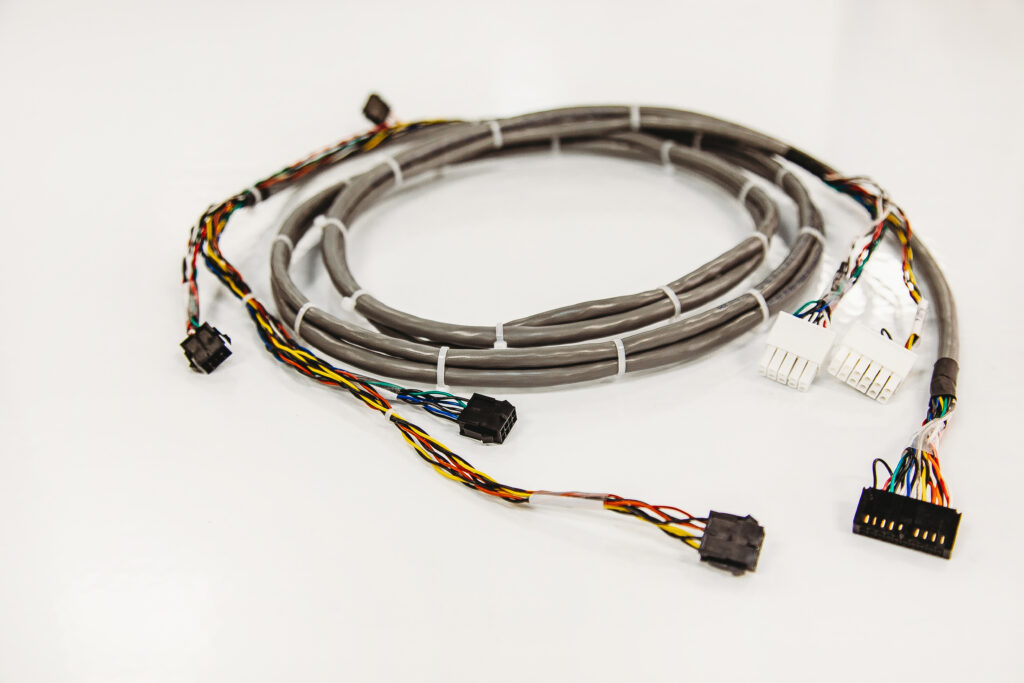Modern aircraft rely on intricate wiring networks, much like a nervous system, to keep all components functioning. At the core of this system are custom wire harnesses, essential for avionics, navigation, and communication. These assemblies ensure signals and power reach every instrument reliably under all conditions.
Leading manufacturers design wire harnesses that optimize efficiency and safety using high-grade materials and precision engineering. Engineers choose each wire, connector, and shield to handle tough conditions. These can range from freezing heights to hot engine areas. More than just wiring, these harnesses are lifelines that maintain aircraft functionality and safety.
The Complexity of Aircraft Custom Wire Harnesses
A Boeing 747 can contain over 150 miles of wiring, all of which must perform flawlessly at 30,000 feet. Unlike generic wiring, manufacturers customize wire harnesses to meet each aircraft’s unique needs. They must withstand temperature extremes, intense vibration, and high electromagnetic interference. High-performance aerospace cables feature flame-resistant materials and resistance to aviation fluids such as fuel, oil, and hydraulic fluid.
Manufacturers achieve durability using advanced insulation like PTFE or Teflon, which tolerates temperatures from -55°C to 175°C. Braided shielding blocks interference to maintain signal integrity. This engineering ensures reliable operation through takeoff, turbulence, and landing without performance degradation. Custom assemblies enhance reliability, outlasting off-the-shelf wiring solutions while minimizing failures.
Learn more about aerospace cable assemblies
Key Benefits of Custom Wire Harnesses
1. Cable Protection
Aircraft harnesses use protective measures such as braided sleeves, tubing, grommets, and secure clamping. These elements shield wiring from moisture, abrasion, and vibration, extending the lifespan of cables. Since aircraft wiring is difficult and costly to repair, protection is critical to long-term reliability.
2. Weight Reduction
Aerospace engineers optimize harnesses to remove unnecessary wiring and use lighter materials. Custom-designed wires are only as thick as needed, avoiding excess copper. Lightweight insulators further reduce weight. Every pound saved improves efficiency, lowers fuel consumption, and reduces stress on the airframe, increasing aircraft longevity.
3. Improved System Integration
Custom wire harnesses streamline aircraft wiring, eliminating tangled cables. Technicians bundle wires cleanly, place connectors strategically, and swap out sections easily. This simplifies installation, maintenance, and troubleshooting while improving overall system reliability.
Preventing Electrical Failures at High Altitudes
Electrical failures mid-flight pose serious risks. Aircraft wire harnesses incorporate safety features to prevent these issues. Unlike generic wiring, aircraft conduits and protective raceways secure wiring paths, preventing chafing and shorts.
Redundancy is another critical feature. Flight control systems often have multiple independent wiring paths, ensuring no single failure can disable essential functions. High-quality insulation prevents short circuits, even in low-pressure, high-altitude environments. Shielding blocks electromagnetic interference, maintaining power and data integrity despite external disruptions from radar, lightning, or onboard electronics.
Manufacturers subject harnesses to rigorous tests, including high-voltage insulation checks, vibration endurance, and extreme temperature cycling. These quality measures ensure that by the time a team installs a harness in an aircraft, the harness already proves its ability to withstand flight conditions.
Smart Weight Reduction: More Than Just Fuel Savings
Aircraft engineers say, “Take care of the ounces, and the pounds take care of themselves.” Custom wire harness design removes excess weight through optimized routing, shorter wire lengths, and multi-conductor solutions. Off-the-shelf wiring lacks this level of refinement, often leading to unnecessary bulk.
A typical narrow-body airliner has about 40 miles of wiring. A wide-body jet can have more than 100 miles. Losing even a little weight per foot can lead to big savings in fuel costs.
It also increases payload capacity and reduces wear on landing gear, brakes, and engines. Weight optimization also allows room for new technology without exceeding design limits.
Long-Term Cost Savings of Customization
Although custom harnesses require an initial investment, they significantly reduce maintenance costs over an aircraft’s lifespan. A well-built harness minimizes failures, preventing costly repairs and unscheduled maintenance downtime. Efficient troubleshooting, enabled by clear labeling and well-documented designs, further saves labor hours and operational costs.
Additionally, custom wire harnesses improve power efficiency, protecting avionics and sensitive electronics from premature failure. Over time, the combined savings in maintenance, fuel, and component longevity far outweigh the cost of custom wiring.
Selecting the Right Custom Wire Harnesses Manufacturer
Choosing the right manufacturer is critical to ensuring reliability and compliance. Consider the following:
- Testing – A top manufacturer tests for heat, cold, vibration, and electromagnetic interference. They do this to mimic real-world flight conditions. Look for thermal cycling, vibration testing, and high-voltage insulation verification.
- Rapid Prototyping & Design Adaptability: Aerospace projects evolve quickly, requiring manufacturers who can create prototypes and refine designs efficiently.
- Industry Expertise: The best manufacturers do more than just make products. They also give advice on routing, connectors, strain relief, and protection solutions.
A reliable manufacturing partner should meet industry standards like AS9100. They should also show a strong understanding of aerospace needs.
Why Custom Solutions Matter More Than Ever
As aviation technology advances, wiring needs grow increasingly complex. High-speed data networks, in-flight entertainment, and electronic propulsion systems demand custom solutions. Generic wiring cannot keep up with modern bandwidth, power, and weight requirements.
Future aircraft will rely on smarter harnesses incorporating embedded sensors, modular sections, and advanced shielding. Custom aerospace cable assemblies enable these innovations by ensuring seamless integration, minimal weight impact, and long-term reliability.
Conclusion
Aircraft wiring is more than just a collection of cables. Custom wire harnesses enhance safety, improve efficiency, and reduce long-term costs. From advanced cable protection and weight optimization to seamless system integration, investing in custom aerospace cable assemblies ensures aircraft operate at peak performance.
Partner with MAC-Cable for Aerospace Custom Wire Harnesses
At MAC-Cable, we specialize in custom wire harnesses that meet the highest standards for protection, safety, and durability. We have a 95.3% on-time delivery rate. We hold certifications in AS9100D, ISO 9001:2015, and IPC/WHMA-A-620 QML. This means we offer reliable solutions for complex aerospace projects.
Need a partner to handle large-scale wiring needs, improve efficiency, and ensure compliance? Contact MAC-Cable today to discuss your project and experience the benefits of expert craftsmanship and superior service.

